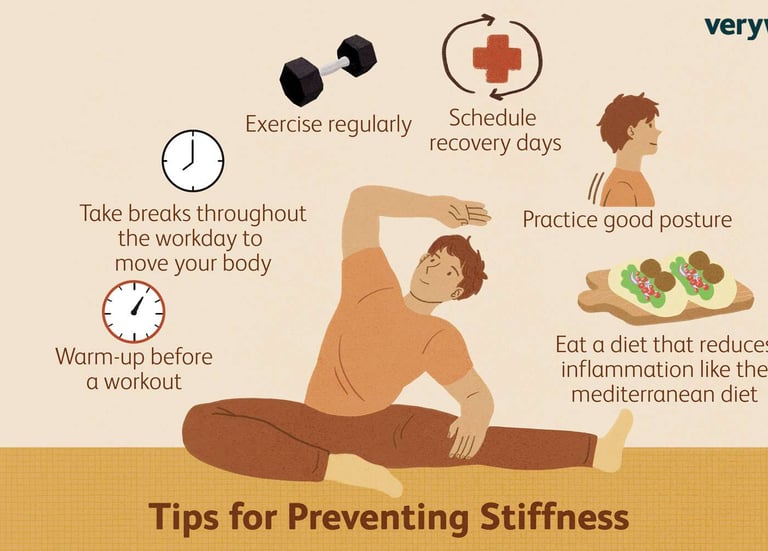No Stress, Stiffness & Tension !
We all feel it. That tightness in the neck after a long day. The heavy chest when stress builds up. The stiff hips from sitting too long. The tension that creeps in quietly… and then suddenly it’s everywhere.


But here’s the good news: your body is not the enemy. It’s your greatest tool to release and reset. Stress, stiffness, and tension don’t have to control you — with the right movement, you can guide them out.
What’s Really Happening When You Feel “Tense”
When you’re stressed — mentally or emotionally — your body doesn’t just “think” it, it holds it. Muscles tighten. Breathing gets shallow. Posture closes in. Blood flow slows in some areas and spikes in others.
This is your body’s way of protecting you. But when that state becomes constant, it leads to:
Stiffness and reduced mobility
Headaches and fatigue
Irritability and emotional tension
Sleep problems and slower recovery
It’s a stress loop. Your mind feels it. Your body locks it in. And unless you move it out… it stays.
Why Movement Is One of the Best “Reset Buttons”
Movement clears physical tension.
Stretching, shaking out your limbs, walking, breathing deep — all send signals to your nervous system that it’s safe to relax. Your muscles lengthen, your breath deepens, your circulation flows again.It resets your stress response.
Active movement lowers cortisol (the stress hormone) and activates your parasympathetic nervous system — your body’s natural “calm mode.”It improves posture and mobility.
Movement opens the spaces that tension closes — your chest, hips, neck, shoulders. When your posture expands, your energy shifts too.It gives emotions a healthy outlet.
Sometimes stress isn’t just in your head. It’s stored in your tissues. A good shake, walk, workout, stretch, or flow can literally help you release what words can’t.
Simple Ways to Move Stress Out of the Body
You don’t need a gym. You don’t need perfect conditions. You just need a body and a few minutes.
1. Micro-movement breaks
Every hour: stand, shake out your hands and arms, roll your shoulders, do a light spine twist. It interrupts stiffness before it builds.
2. The “Walk It Off” method
When you feel overwhelmed, don’t scroll — walk. 5–10 minutes outside or around your space is often enough to reset your mind.
3. Stretch zones that hold stress
Neck, shoulders, chest, hips — they carry the most tension. Try slow neck rolls, shoulder shrugs, chest openers, hip stretches. Breathe deeply into each one.
4. Full-body flow
Put on music. Move however your body wants — stretch, sway, shake, dance. No rules. Just letting your system breathe again.
5. Conscious breath with movement
Pair gentle movement with long exhales. Your breath is the key that tells your body it’s safe to let go.
Real Talk: You Don’t Have to Hold It All
One of the biggest shifts happens when you realize:
👉 Stress isn’t just something to “think away.”
👉 Your body is not a container to store tension.
👉 Movement is a language your body understands better than words.
People in our APE community have seen incredible changes just from adding 5–15 minutes of daily mobility, walks, or mindful stretching. Less pain. Clearer head. Softer mood. Lighter energy.
Your Challenge Today
Take 3 minutes right now.
Stand tall, roll your shoulders back, take a deep breath in.
Shake out your arms, stretch your chest, twist gently side to side.
Exhale slowly.
Notice how your body already feels different.
This is your body reminding you: movement is medicine.
Remember: You don’t have to wait for the perfect time to move. You just need to begin. Stress, stiffness, and tension will always come and go — but how you respond to them is your power. Breathe. Move. Release.


